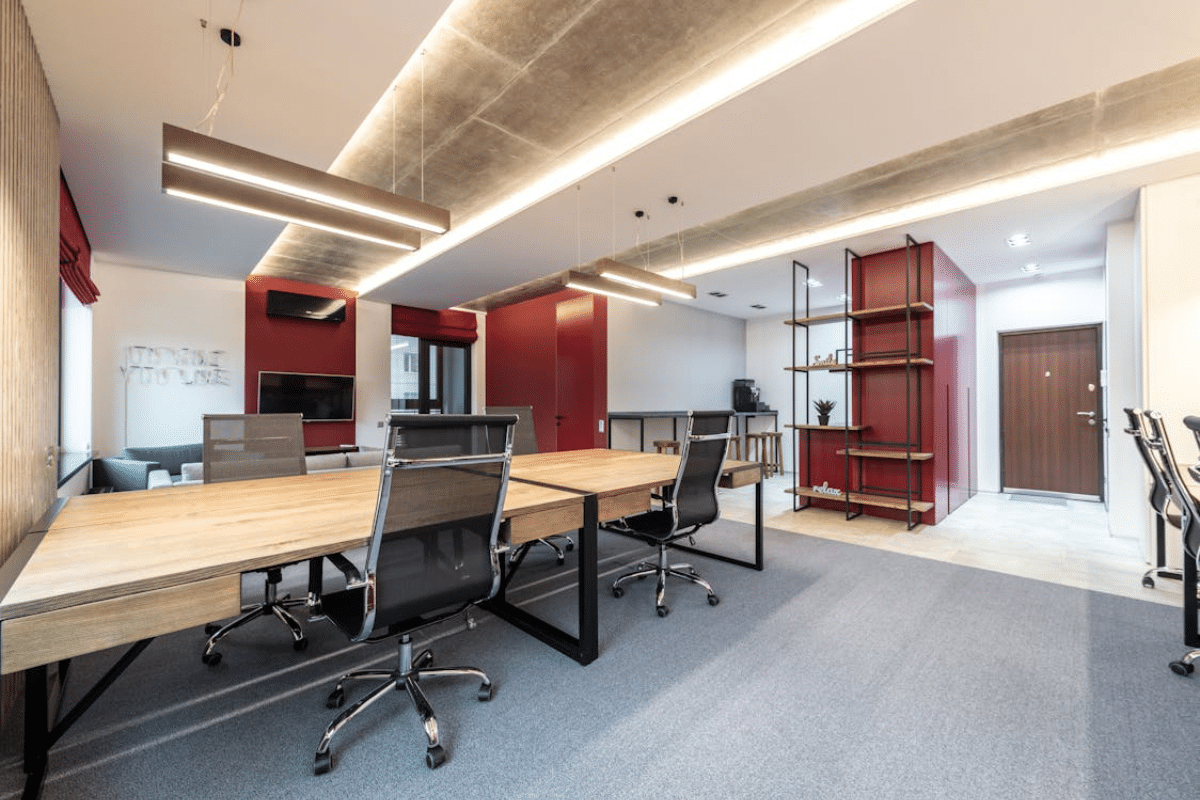Commercial interior design is a key component of any business location, influencing both employee productivity and client perceptions. Whether you’re opening a new office, retail space, or restaurant, following interior design best practices will help you create a friendly and functional environment. Here are some important dos and don’ts to bear in mind.
Do: Prioritize Functionality
When creating a commercial interior space, practicality should be the first priority. Consider the daily activities that will occur in the vicinity and design your layout accordingly. For example, an open-plan office may foster better communication and collaboration, whereas a retail store need defined pathways to guide customers through products.
Things to remember:
- Include storage solutions to keep the area organized.
- Ensure that there is enough space for moving.
- Choose furniture that is both comfy and functional.
Don’t: Overlook Brand Identity
The company’s area should embody your brand’s identity. The design elements you select—colors, furnishings, and decor—should all reflect your brand’s ideals and image. This not only improves the aesthetic appeal, but also promotes your brand with customers and clients.
Mistakes to Avoid:
- Using colors or styles that are incompatible with your brand’s identity.
- Forgetting to display your logo and brand statements.
- Ignoring the importance of maintaining brand consistency throughout your space.
Do: Pay Attention to Lighting
Commercial interior design relies significantly on lighting. Proper lighting can improve the mood, increase productivity, and make the place feel more attractive. Natural light is the greatest option, but if it is not available, blend ambient, task, and accent lighting to create a well-lit space.
Things to remember:
- Maximize natural light wherever possible.
- To avoid gloomy corners, combine different forms of lighting.
- Select energy-efficient lighting solutions.
Don’t: Neglect The Ergonomics
Ergonomics is critical, particularly in workplaces where people work long hours. Poor ergonomic design can cause discomfort, health difficulties, and reduced productivity. Invest in ergonomic furniture and plan your layout to ensure ease of use and comfort.
Mistakes to Avoid:
- Using inexpensive, non-ergonomic chairs and desks.
- Positioning workstations in a way that produces strain or discomfort.
- Underestimating the significance of adjustable furniture options.
View this post on Instagram
A post shared by Swati Kubal Interior Decorator (@ligerinteriors_studio)
Do: Create An Adaptive Plan
Flexibility is essential in commercial interior design. Businesses evolve and develop, and your workspace should be adaptable to those changes. Modular furniture, adjustable walls, and versatile design allow you to modify your area as needed without requiring major modifications.
Things to remember:
- Choose modular furniture that can be quickly modifiable.
- Use movable dividers to make areas flexible.
- Plan for future growth and changes to your design.
Don’t: Overcrowd the Space
Overcrowding can make your commercial space appear claustrophobic and unappealing. It is critical to achieve a balance between filling the area with necessary furniture and decor and allowing adequate room for movement and comfort.
Mistakes to Avoid:
- Filling all available space with furnishings or design.
- Neglecting to allow open zones for easy mobility.
- Overcrowding the space with unneeded objects.
To Conclude
Commercial interior design is a balancing act between aesthetics, functionality, and brand expression. By sticking to these dos and don’ts, you can design a place that not only looks amazing but also meets the demands of your company and its employees. Prioritize utility, represent your brand, pay attention to lighting, think about ergonomics, plan for flexibility, and prevent congestion. With these recommendations, you may transform your commercial area into a productive, welcoming, and memorable setting.

